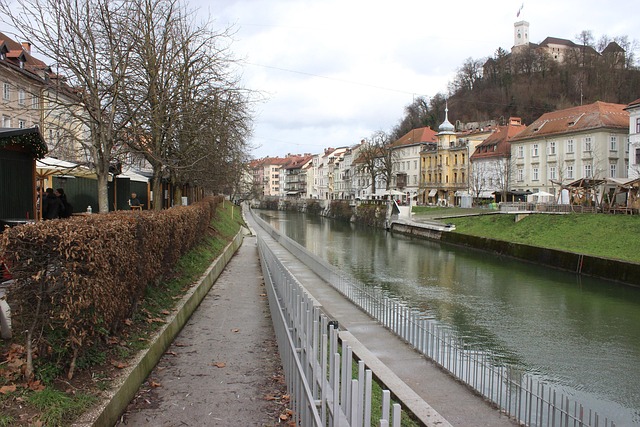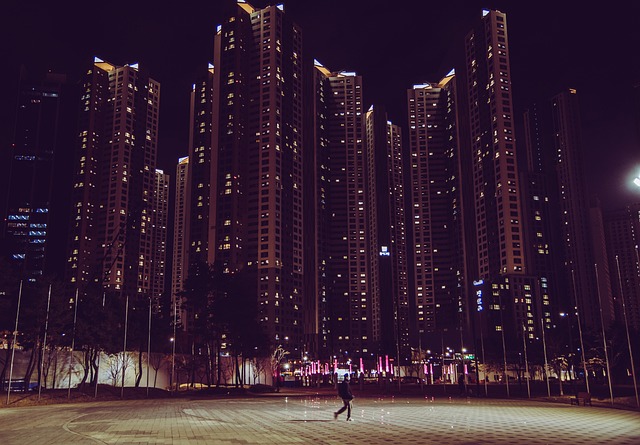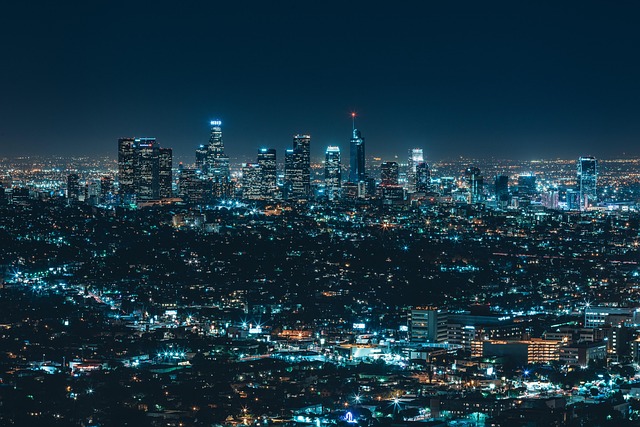Karachi, Pakistan's vibrant metropolis, faces significant traffic congestion due to high vehicle density during peak hours and inadequate infrastructure. Major roads, intersections, and bridges often experience gridlock, impacting daily commutes and economic activities. The city's traffic flow varies by district, with business hubs like the Financial District seeing heavy vehicular movement, while residential areas have more consistent but occasional spikes. Stadium Road, a vital link in Karachi's network, symbolizes the city's dynamic transport landscape. To address these challenges, the Karachi Metropolitan Authority (KMA) is implementing smart city initiatives, focusing on expanding road infrastructure, promoting public transit with BRT networks, and introducing digital solutions for real-time traffic management. These efforts aim to create a more efficient, sustainable, and livable urban environment for Karachi's growing population.
Karachi, Pakistan’s bustling metropolis, faces unique traffic challenges, particularly on Stadium Road, a vital urban transport hub. This article delves into the intricate traffic patterns of Karachi, focusing on how Stadium Road navigates through the city’s complex network. We explore current challenges and propose smart city initiatives for future proofing, aiming to enhance mobility and alleviate congestion in Karachi. By understanding these dynamics, we can foster a more efficient and sustainable urban transport system.
- Karachi's Traffic Patterns: A Comprehensive Overview
- Stadium Road: Navigating the Urban Transport Hub
- Challenges and Solutions in Karachi's Road Network
- Future Proofing: Smart City Initiatives for Karachi
Karachi's Traffic Patterns: A Comprehensive Overview

Karachi, Pakistan’s vibrant metropolis, is known for its bustling traffic patterns that reflect the city’s energy and growth. Understanding Karachi’s traffic is essential to navigating this urban landscape. The city experiences peak hours during morning and evening commutes, with a significant increase in vehicle density on major roads leading to commercial hubs and residential areas. Traffic congestion is a common occurrence, especially at intersections and bridges that connect different parts of the metropolis.
Karachi’s traffic flow varies across different zones. The business districts, such as the Financial District and the Pearl Continental area, see heavy vehicular movement throughout the day due to the high concentration of offices and commercial activities. In contrast, residential neighborhoods like Clifton and Saddar experience more consistent traffic levels, with occasional spikes during local market hours and school drop-offs/pick-ups. The city’s network of highways, including the National Highway and the M9, plays a crucial role in facilitating movement, but they too face congestion during peak travel times.
Stadium Road: Navigating the Urban Transport Hub

Stadium Road, located in the heart of Karachi, is more than just a thoroughfare; it’s an urban transport hub that pulsates with the city’s vibrant energy. This bustling road, lined with a mix of commercial establishments and residential complexes, serves as a vital link between key areas, facilitating both daily commutes and economic activities. The road’s significance is further underscored by its proximity to major landmarks, including sports venues and educational institutions, making it a central node in Karachi’s complex network of roads and pathways.
Navigating Stadium Road requires an understanding of its dynamic character. During peak hours, the road comes alive with a steady stream of traffic, reflecting the city’s relentless pace. However, smart urban planning has incorporated strategies to manage this flow, including dedicated lanes for public transport and well-placed traffic signals that help maintain relative order amidst the hustle and bustle. For those who call Karachi home or are familiar with its streets, Stadium Road represents a testament to the city’s ever-evolving transportation landscape.
Challenges and Solutions in Karachi's Road Network

Karachi, Pakistan’s bustling metropolis, faces significant challenges in its road network, which directly impacts the daily lives of its residents and businesses. The city’s rapid urbanization and increasing vehicle population have led to severe congestion, particularly during peak hours. Narrow lanes, inadequate signage, and poorly maintained roads further exacerbate these issues. One of the primary problems is the lack of efficient public transport, encouraging more people to rely on private vehicles, adding to the traffic burden.
To address these challenges, the Karachi Metropolitan Authority (KMA) has initiated several projects. These include expanding road infrastructure, introducing smart traffic management systems for better signal timing, and promoting public transportation through bus rapid transit (BRT) networks. Additionally, implementing digital solutions like real-time traffic monitoring and mobile applications can provide drivers with alternative route suggestions, helping to alleviate congestion. By focusing on these strategies, Karachi aims to create a more seamless and efficient road network for its growing population.
Future Proofing: Smart City Initiatives for Karachi

Karachi, as a bustling metropolis, is constantly evolving, and future-proofing its urban infrastructure is paramount for sustainable development. Smart city initiatives are transforming the way we navigate our urban spaces, and Karachi is no exception. By integrating technology into daily life, these projects aim to enhance efficiency, reduce congestion, and improve overall quality of life for residents.
One key focus area is traffic management. Smart traffic signals, real-time data analytics, and connected vehicles can significantly optimize road usage. This ensures smoother commuting, reduces travel time, and minimizes the environmental impact. Karachi’s initiative towards becoming a smart city involves utilizing these technologies to create a more livable and responsive urban environment, setting a positive example for other Pakistani cities.
Karachi, with its bustling traffic and complex road network, faces continuous challenges to ensure efficient urban mobility. The article has explored these issues, from understanding the city’s unique traffic patterns on Stadium Road to examining the broader challenges and proposed smart city initiatives for the future. By leveraging technology and implementing strategic solutions, Karachi can transform its transportation infrastructure, making it safer, more accessible, and sustainable for its ever-growing population. These efforts are crucial steps towards building a modern, livable metropolis that caters to the needs of its diverse residents.



